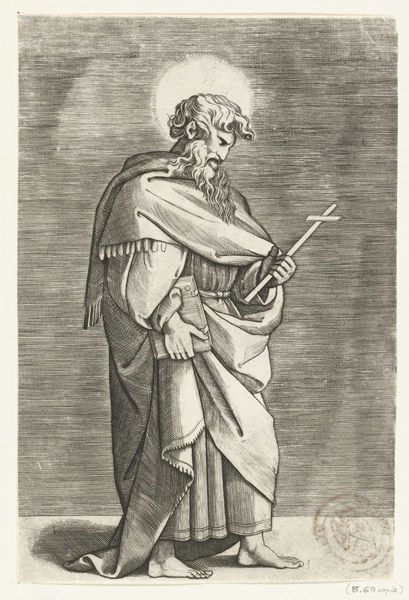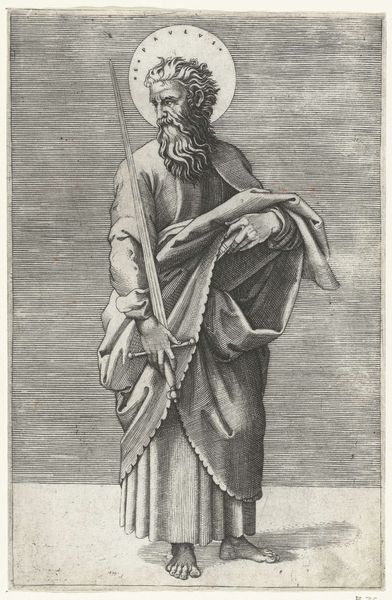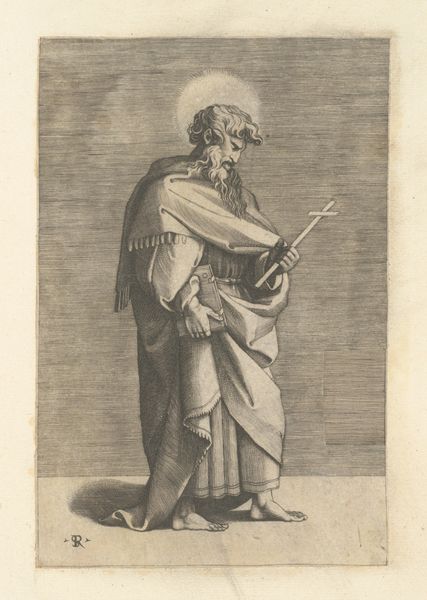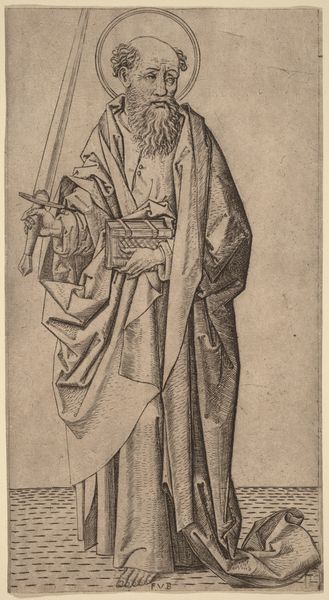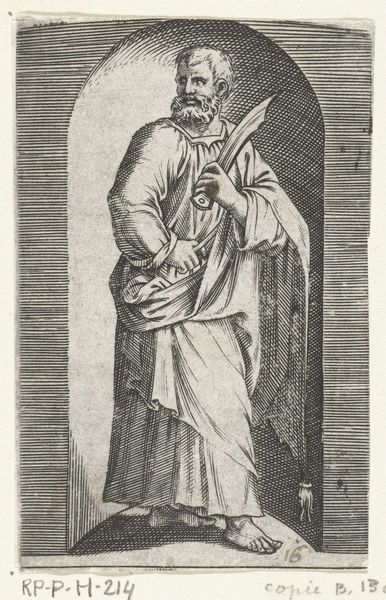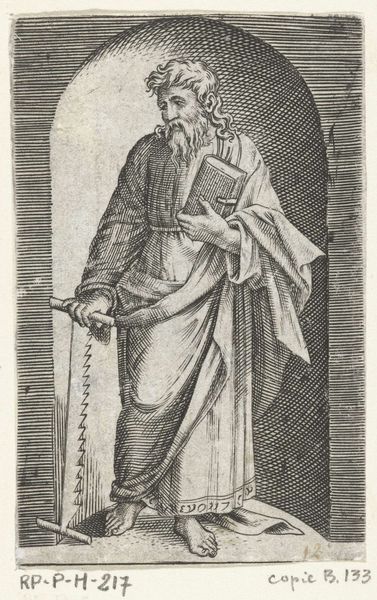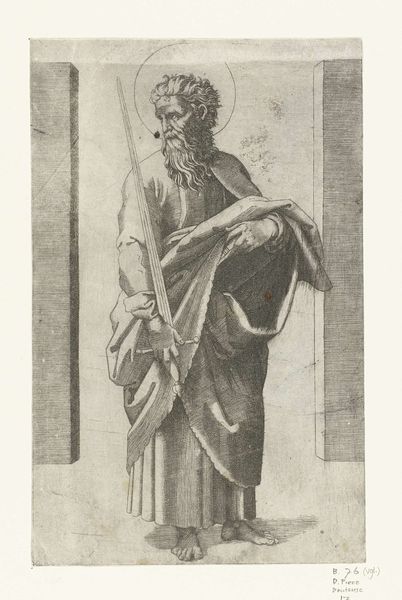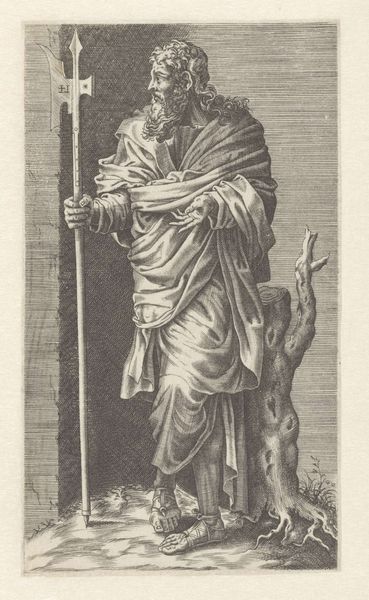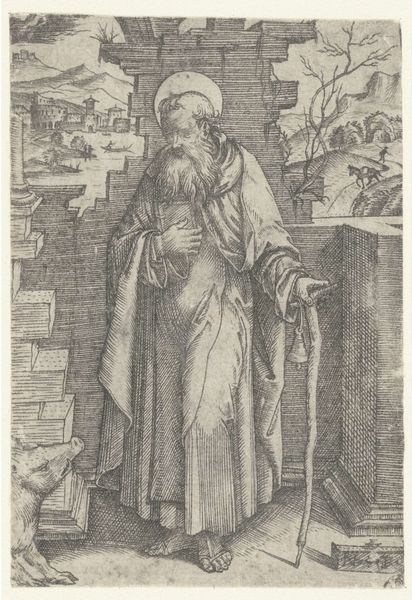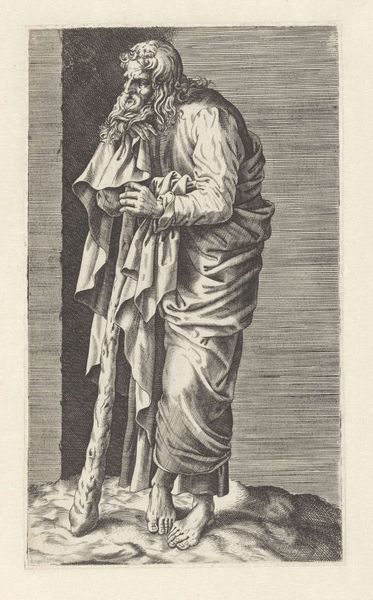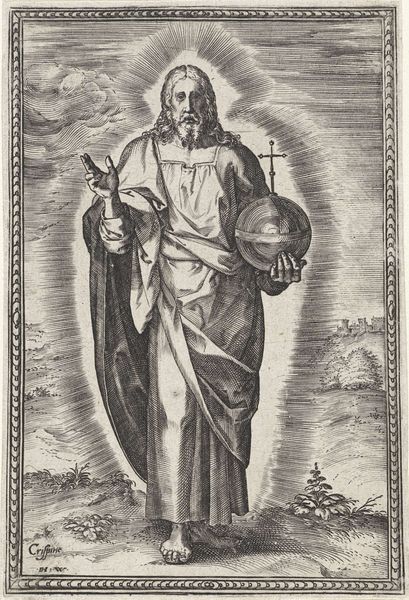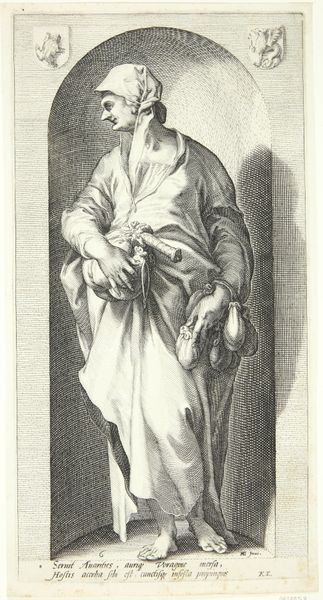
St. Matthew, from Christ and the Apostles 1530 - 1576
0:00
0:00
drawing, print, engraving
#
portrait
#
drawing
# print
#
mannerism
#
figuration
#
men
#
portrait drawing
#
history-painting
#
engraving
Copyright: Public Domain
Curator: Here we have Lambert Suavius's "St. Matthew, from Christ and the Apostles," an engraving created sometime between 1530 and 1576. What are your initial thoughts? Editor: Striking, certainly. There's a strong textural contrast—the rough, almost crude rendering of the rock beneath his bare foot against the relatively refined depiction of the drapery and the patterned background. What’s he holding? Curator: That's a T-square, the traditional attribute of St. Matthew, signifying his role as both an Apostle and, more broadly, his association with divine order and measurement. It also speaks to the Mannerist fascination with knowledge. Editor: That tool anchors the whole composition. How would such a print be disseminated at the time? Where was it made? Understanding the social and geographic circuits through which these prints traveled surely adds depth. Curator: Lambert Suavius was active in Liege and, later, Antwerp, major centers for printmaking and the burgeoning art market. Consider how these images democratized access to religious and historical narratives at a time when literacy was not universal. Prints were relatively affordable, which broadened artistic engagement and shaped cultural understanding of these figures. We cannot forget its power within the counter-reformation. Editor: Absolutely. But it is worth remembering, too, that the quality of the paper, the ink, the very act of reproduction…it’s a material endeavor, imbued with the labor of both the artist and the printer. Think, too, about the markets these engravings entered: who could afford them, who consumed them, and where? Curator: Looking at Matthew himself, there's a subtle tension between his aged visage, etched with wisdom and hardship, and the elegant fall of the fabric around him, reflective of the Mannerist aesthetic that favored stylized grace over naturalism. These kinds of conflicting signals challenge traditional iconography. He is less divine sage and more human interpreter, standing between those divine ideals and the dirt at our feet. Editor: The intersection between this ideal, refined execution of cloth, with this rough and abraded support...and its availability thanks to reproducible and somewhat industrialized means. I see echoes even now. Curator: Indeed, it’s a compelling interplay that raises crucial questions about the dissemination of ideas and the shaping of collective memory. Editor: For me, this analysis sharpens not only an appreciation of Suavius’ work, but invites us to understand art's intrinsic role in our own constantly changing society.
Comments
No comments
Be the first to comment and join the conversation on the ultimate creative platform.
